This roundup delves into the latest social listening trends and the best social media listening tools, offering insights into how businesses can harness them to enhance customer engagement and their social media management strategy. Let’s dive in!
9 Industry Trends in Social Listening for 2025
Here’s how the smartest brands are evolving their social media listening strategies to meet today’s digital landscape.
1. Smarter AI Sentiment Analysis and Contextual Listening
AI has evolved remarkably in customer sentiment analysis, advancing beyond simple positive or negative categorizations to a more nuanced understanding of context, sarcasm, emojis, cultural nuances, and emotional states. This means AI can now detect emotions like frustration, excitement, and confusion more accurately.
What does this mean for you?
Think about it this way: when a customer tweets "Great, my order is late again 🙄," the old AI might miss the sarcasm entirely. But smarter AI recognizes the frustration behind those words and that eye-roll emoji. This means your team can jump in with the right response instead of awkwardly thanking someone for a compliment that was actually a complaint.
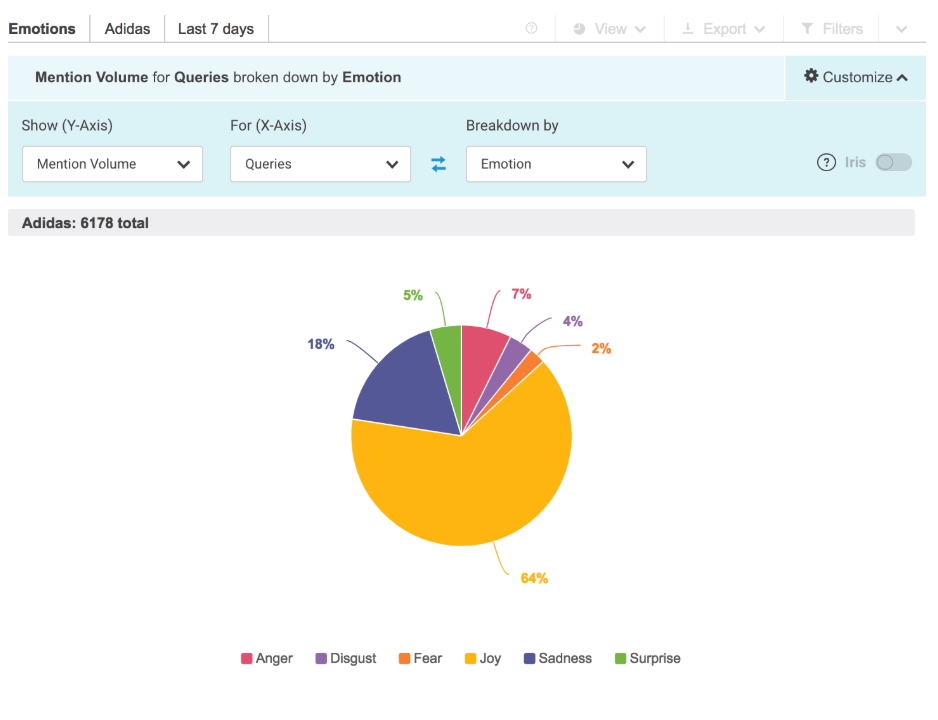
Take Brandwatch's emotion clustering capabilities. Instead of just saying "this feedback is negative," it can tell you "your customers are specifically frustrated about shipping delays" or "people are genuinely excited about your new product launch." This kind of insight helps you know exactly what to fix or what to celebrate and respond while people still care about the issue.
The bottom line? AI is getting better at understanding people the way people actually communicate, not just the way we think they should.
Business benefits:
- You can prevent potential crises with early emotional trend detection
- Build stronger relationships by responding with empathy and relevance
2. Social Listening Goes Beyond Social
Social listening used to mean tracking Facebook comments and Twitter hashtags. Now? Your customers are having real conversations about your brand in places you might not even know exist. Here's how this evolution is shaping brand perception and strategic insights:
Forums, Review Sites, and Community Boards: Social listening tools now track conversations on platforms like Reddit and Discord, where communities actively discuss products, brands, and trends. These platforms offer rich insights into consumer sentiments and emerging trends.
Web3 and Blockchain Communities: As blockchain technology and cryptocurrencies gain traction, social listening extends to these digital communities, capturing discussions that can influence brand strategies and product offerings.
Messaging Apps and Private Groups: Conversations in messaging apps and private groups, such as WhatsApp and Telegram, are becoming valuable sources of consumer insights. Brands can tap into these semi-private discussions to understand customer needs and preferences.
Niche Industry Forums: Specialized forums cater to specific industries and interests, providing brands with targeted insights relevant to their niche markets.
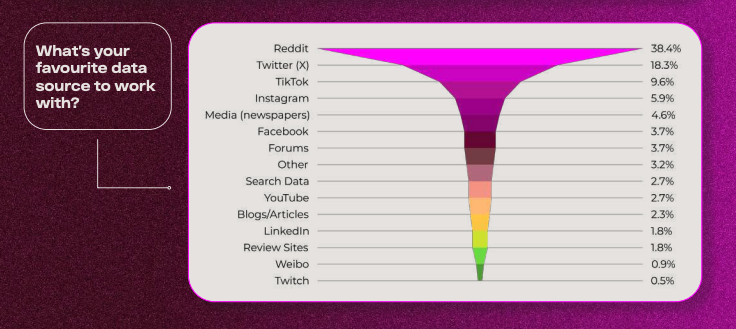
What does this mean for you?
Here's the thing: these online conversations are often more honest and detailed than what people post publicly. When someone complains about your product in a private Telegram group or asks for alternatives on a niche forum, they're not trying to get your attention–they're just being real with their community. That makes this feedback incredibly valuable.
You're also getting access to conversations that happen before people make purchasing decisions. Someone might ask, "Has anyone tried Brand X's new feature?" in a Reddit community weeks before they buy. If you're listening, you can understand what's driving their decision-making process.
Business benefits:
This expanded listening approach gives you three major advantages:
- Early warning signals about problems or opportunities before they become widespread.
- Competitive intelligence that your competitors probably don't have.
- Discovery of new audiences and communities you didn't know cared about your brand.
The key is that people behave differently across platforms. The same customer might be polite on LinkedIn, sarcastic on Twitter, and brutally honest on Reddit. By listening across all these channels, you get a complete picture of how people really feel about your brand.
3. Audio, Video, and Visual Content Listening Takes Off
Text-based social listening is just the beginning. Today's conversations happen in TikTok videos, YouTube reviews, Instagram Stories, and podcast mentions. Someone might be raving about your product in a 30-second TikTok, or your logo could appear in the background of a viral video without you even knowing it.
What does this mean for you?
Think about how people actually share experiences now. Instead of typing a review, they're filming unboxing videos, creating comparison content, or casually mentioning your brand while talking about something else entirely. These conversations are often more authentic and influential than written posts, but until recently, they were invisible to most monitoring tools.
This matters because video content drives purchasing decisions differently than text. When someone shows your product working (or not working) in real-time, or when your brand gets mentioned in a popular podcast, the impact on perception can be immediate and significant. Missing these mentions of your brand means missing crucial feedback and opportunities to engage with your target audience where they're actually spending their time.
Business benefits:
The ability to monitor multimedia content gives you three key advantages:
1. Proactive brand management by spotting viral moments in real time, allowing you to amplify wins or mitigate risks before they escalate.
2. Deeper customer insights fueled by unfiltered, in-the-moment reactions and genuine product usage.
3. Expanded influencer visibility through the discovery of unexpected brand advocates already driving organic reach and engagement.
Tools like Talkwalker use AI to recognize your logo in images, detect your brand name in audio, and analyze the sentiment of video content. While the technology isn't perfect yet (it can miss context or misinterpret tone), it's advancing rapidly and already provides insights that were impossible to gather just a few years ago.
4. Data Privacy and Ethical Listening
The days of collecting any data you want from social media are over. GDPR, CCPA, and other privacy regulations have fundamentally changed how social listening works. Now, every piece of data you collect needs to be justified, protected, and potentially deletable on request.
What does this mean for you?
This shift affects every aspect of your listening strategy. You can't just scrape everything anymore. You need explicit consent for personal data, clear policies about what you're collecting, and systems that let people control their information. It's not just about avoiding fines (though those can be massive). It's about building trust with your audience and ensuring your listening practices can withstand scrutiny.
The challenge is that the most valuable insights often come from personal data such as understanding individual customer journeys, tracking sentiment changes over time, or analyzing demographic patterns. But now you need to balance those insights with privacy protection, which means being more strategic about what data you actually need versus what might be nice to have.
Business benefits:
Taking privacy seriously in your social listening approach delivers several important benefits:
- Regulatory compliance that protects you from hefty fines and legal issues while keeping your listening programs operational in all markets
- Enhanced customer trust that comes from transparent data practices, leading to more willing participation in surveys and feedback programs
- Better data quality because focusing on consensual, necessary data often results in more accurate and actionable insights than broad data sweeps
- Competitive advantage as privacy-conscious consumers increasingly choose brands that demonstrate responsible data handling
- Future-proofing your listening strategy against evolving regulations and changing consumer expectations around privacy
Today's social listening tools have evolved to meet these privacy demands. Platforms now come with built-in consent management systems, secure data storage, and controls that let users manage their information easily.
5. Integrated Listening for Customer Care and Crisis Management
Customer complaints and brand crises don't wait for business hours. They explode on social media at 2 AM, spread across platforms before your team has their morning coffee, and can spiral into major reputation issues before you've even noticed them. That's why integrated social listening has become essential for customer care and crisis management.
What does this mean for you?
The numbers tell a clear story about how seriously organizations are taking this. According to The Social Intelligence Lab's 2023 report, 39% of companies now spend over $100,000 annually on social listening tools. That's not just monitoring. That's strategic investment in early warning systems.
What makes this approach powerful is the integration aspect. Instead of having separate teams monitoring different platforms, smart organizations are connecting their social listening directly to their customer service and crisis management workflows. When someone posts a complaint on Instagram, it automatically creates a support ticket. When negative sentiment spikes across multiple platforms, it triggers crisis protocols.
The challenge is that 61% of social listening professionals have over five years of experience, but they're still struggling with data quality and tool integration. This means even experienced teams are finding it difficult to turn social data into actionable responses quickly enough.
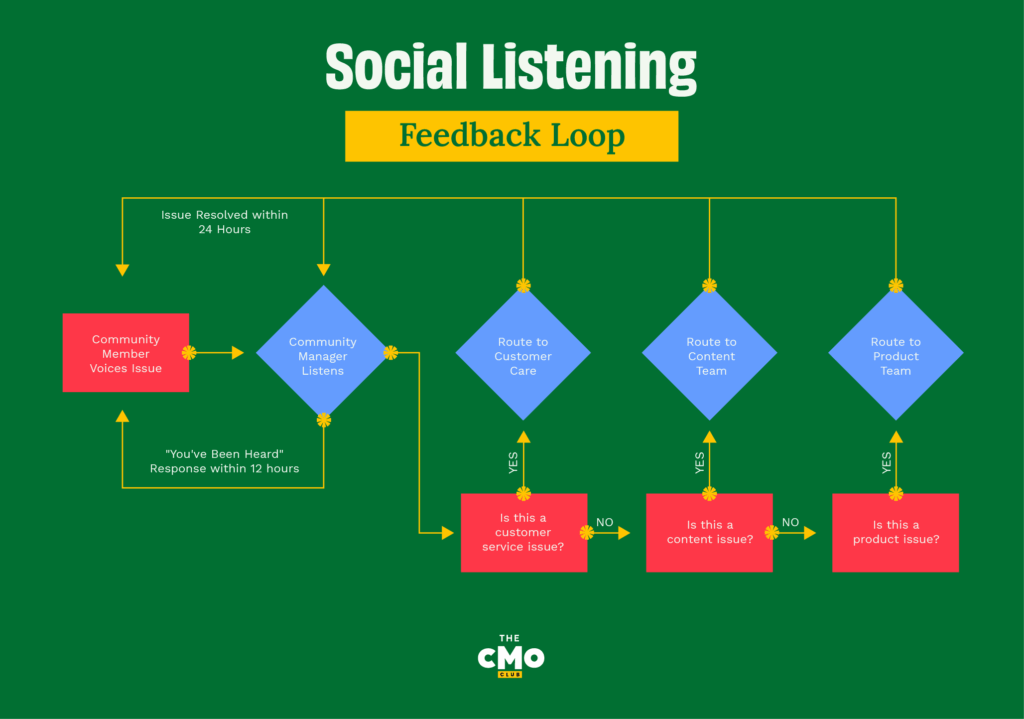
Business benefits:
Companies that do get integrated listening right see significant returns in several areas:
- Faster response times that can prevent minor complaints from becoming major crises, often resolving issues before they spread beyond the original post.
- Proactive crisis detection that identifies potential problems when they're still manageable, based on sentiment trends and conversation volume spikes.
- Better customer satisfaction because issues are caught and addressed quickly, often before customers have to reach out through traditional support channels.
- Resource efficiency as customer service teams can prioritize responses based on reach and potential impact rather than just chronological order.
- Reputation protection through early intervention that prevents negative sentiment from building momentum across multiple platforms.
A perfect example of this integration in action is Meltwater's connection with Zendesk. When someone posts a complaint or issue on social media, Meltwater’s automation creates a support ticket in Zendesk, complete with the original post, sentiment analysis, and customer context. This means your support team can respond to a Twitter complaint with the same speed and tracking they'd use for an email, turning social media from a separate channel into part of your unified customer service workflow. The key is having systems that can distinguish between casual mentions and situations that need immediate attention.
6. Social Listening ROI Attribution and Business Impact
Measuring social listening success through likes and shares is no longer enough. Today's competitive landscape demands that we know exactly how social insights translate into pipeline growth, customer acquisition, and revenue. The shift is dramatic: we've moved from "look how many people mentioned us" to "show me how social listening contributed to our quarterly numbers."
What does this mean for you?
This evolution reflects a fundamental change in how businesses view social data. Instead of treating social listening as a marketing nice-to-have, companies are integrating it directly into their revenue operations. Successful companies are using social insights to identify high-intent prospects, understand buying signals, and optimize their entire customer acquisition funnel.
The numbers support this shift. The social listening market is projected to grow from $8.44 billion in 2024 to $16.19 billion by 2029 (Research and Markets, 2024). That's not just growth but validation that social listening delivers measurable business value when implemented strategically.
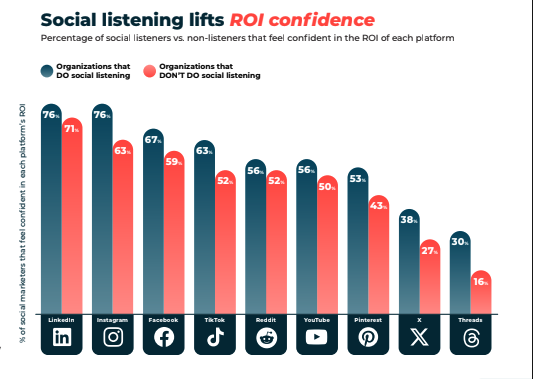
Business benefits:
Companies that tie social listening to business outcomes see returns across multiple areas:
- Improved lead generation by identifying prospects who are actively discussing problems your product solves, often before they start actively shopping.
- Lower customer acquisition costs through better audience targeting based on actual conversations and interests rather than demographic assumptions.
- Higher customer lifetime value by understanding customer needs and pain points, leading to better product development and customer retention.
- Enhanced pipeline visibility as social signals help predict which prospects are most likely to convert and when.
- Faster sales cycles because your team can engage with prospects who are already researching solutions, reducing the time from brand awareness to purchase.
Key Metrics That Matter
The most successful implementers track these business-focused metrics:
| Traditional Metric | Business-Focused Alternative | Why It Matters |
| Brand mentions | Lead generation rate | Shows how social conversations translate to sales opportunities |
| Sentiment score | Customer acquisition cost (CAC) | Measures the efficiency of social-driven customer acquisition |
| Engagement rate | Customer lifetime value (LTV) | Indicates long-term revenue potential from social interactions |
| Share of voice | Pipeline velocity | Tracks how social listening insights accelerate deal progression |
Companies like HelloFresh and the NBA have demonstrated how this approach works in practice. Instead of just monitoring brand mentions, they're using social data to inform product development, identify market opportunities, and optimize their entire customer experience. The result? Social listening becomes a revenue driver rather than just a monitoring tool.
7. Platform-Specific Strategies
Instead of spreading your team thin across every platform that exists, successful brands are getting strategic about where they invest their time and resources. It's not about being on every platform–it's about being meaningful on the right ones.
What does this mean for you?
This shift fundamentally changes how you approach social listening and engagement. Instead of monitoring dozens of platforms superficially, you can dive deep into the conversations that actually matter to your business. You'll understand the nuances of how your audience communicates on each platform, what content resonates, and when they're most likely to engage.
The difference between B2B and B2C approaches is particularly telling. B2B companies are finding that LinkedIn conversations often lead to actual sales meetings, while their Facebook presence might generate zero leads. B2C brands have discovered that TikTok drives more product discovery than Twitter ever did. This kind of insight only comes from focused listening rather than scattered monitoring.
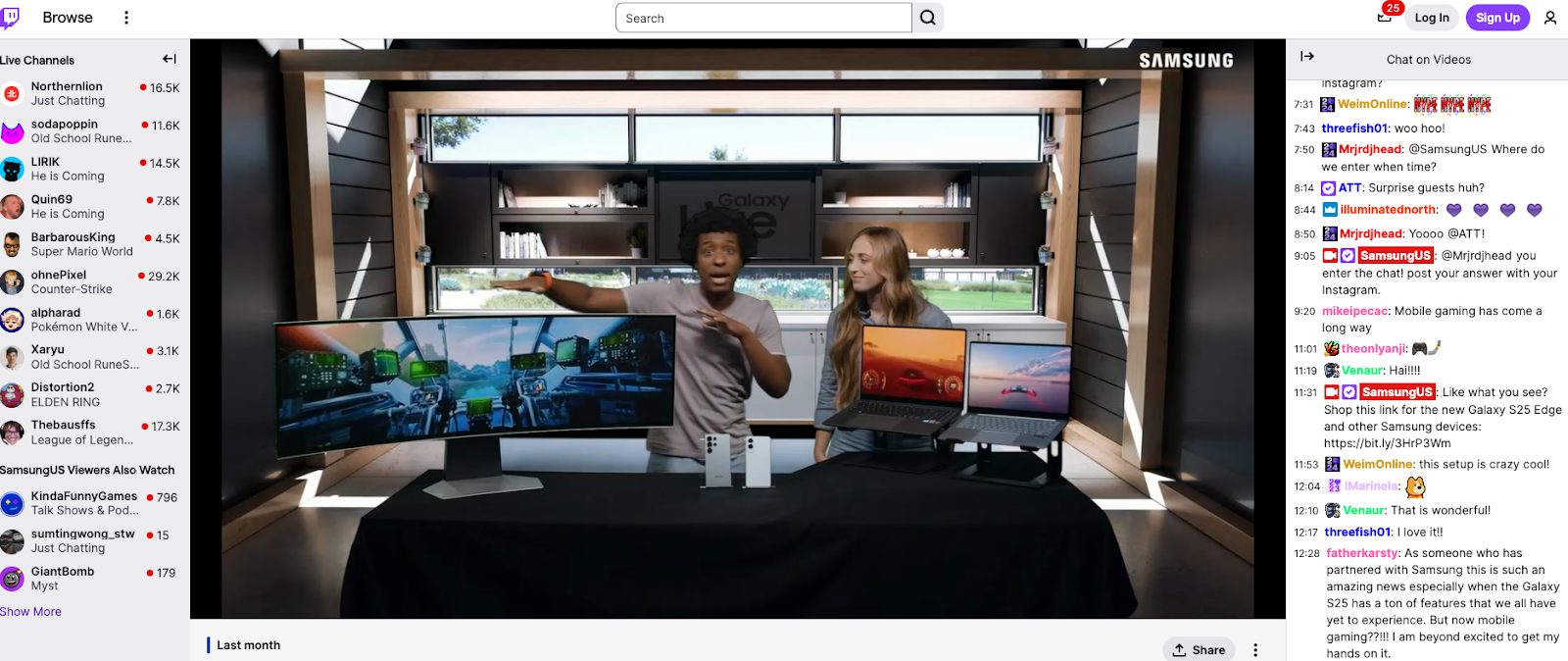
Business benefits:
Companies that focus strategically on platform selection see several important benefits:
- Higher engagement rates because content creation is tailored to each platform's unique culture and user behavior patterns.
- Better resource allocation as your team can create fewer, higher-quality pieces of content rather than rushing to post everywhere.
- Deeper audience insights from concentrated listening that reveals genuine customer needs and preferences.
- Improved conversion rates because you're reaching people where they're already primed to engage with your type of content.
- Stronger community building as consistent, platform-appropriate presence helps establish your brand as a trusted voice in specific spaces.
How to select the right platform:
The most effective approach involves three key steps:
- Analyze audience behavior: Find where your audience actually spends time and what content they expect on each platform
- Customize your approach: Tailor both content strategy and listening strategy to each platform's unique conversation style
- Track and pivot: Monitor performance ruthlessly and abandon platforms that don't deliver measurable results
Don't overlook emerging platforms like Discord, Twitch, Mastodon, and Threads. These spaces often host incredibly engaged niche communities having detailed and relevant conversations about specific topics.
8. Influencer Marketing
The influencer marketing game has completely changed. Instead of chasing celebrities with millions of followers, smart brands are using social listening to find authentic voices who are already talking about their industry.
What does this mean for you?
Social listening transforms how you approach influencer partnerships by showing you who's genuinely engaged with your space before you even reach out. Instead of cold-pitching influencers based on follower counts, you can identify people who are already passionate advocates for your industry or even your brand specifically.
This shift toward authenticity can be seen in the numbers. Businesses today earn an average of $18 for every dollar spent on influencer marketing, but that ROI depends entirely on choosing the right partners. With 69% of brands now working with smaller creators and 93% of marketers incorporating influencer marketing into their strategies, the competition for authentic voices is fierce.
This is where social listening gives you an edge. While your competitors are still reaching out to influencers based on vanity metrics, you can identify micro-influencers whose audiences are actually discussing problems your product solves.
Business benefits:
Using social listening to guide influencer partnerships delivers many important benefits:
- Higher engagement rates because you're partnering with influencers whose audiences are genuinely interested in your category, not just following for entertainment
- Better audience alignment as you can analyze an influencer's actual conversations and follower demographics before committing to partnerships
- More authentic partnerships since you're working with people who already have genuine opinions about your industry rather than forcing product placements
- Reduced partnership risks by understanding an influencer's reputation and audience sentiment before signing contracts
- Cost efficiency through identifying effective micro-influencers before they become expensive, while avoiding overpaying for inflated reach
What to look out for:
Look out for these red flags before they damage your brand:
- Fake engagement: Watch for influencers with high follower counts but suspiciously low engagement rates (like 100K followers but only 50 likes per post).
- Audience negativity: Monitor comment sections for complaints, controversy, or audiences calling out obvious sponsored content with comments like "another ad" or "sellout."
- Values misalignment: Review their complete conversation history to ensure their organic content aligns with your brand values, not just their media kit (a wellness brand partnering with someone who regularly posts about excessive drinking).
9. Predictive Analytics and Trendspotting
The old way of social listening was essentially digital firefighting: wait for something to happen, then scramble to respond. Today's approach is completely different. Instead of reacting to trends after they've already taken off, leading brands are using predictive analytics to spot emerging patterns and get ahead of the curve.
What does this mean for you?
Predictive analytics or forecasting works by analyzing historical patterns and identifying subtle signals that indicate a trend is building. For example, if mentions of "sustainable packaging" increase by 15% week-over-week across multiple platforms, and sentiment around plastic waste becomes increasingly negative, the algorithms can predict this will become a major consumer concern before it explodes into mainstream consciousness.
The competitive advantage is enormous. Instead of watching competitors capitalize on trends you missed, you could be the one setting the agenda. When you can identify a topic that's gaining momentum before it hits mainstream awareness, you could prepare and develop the right response.
Business benefits:
Companies that embrace predictive social listening see several important benefits:
- First-mover advantage by identifying and acting on emerging trends before competitors even notice them developing.
- Better resource allocation through advance warning of what topics will matter most to your audience in the coming months.
- More successful product launches by developing features based on predicted consumer needs rather than past behavior.
- Enhanced brand positioning as an industry thought leader who consistently stays ahead of market shifts.
Best Social Listening Platforms in 2025
Here’s a shortlist of the best social listening tools that offer comprehensive, actionable insights that help marketing teams make informed decisions, protect brand reputation, and get better results from their social media strategy.
What’s Next for Social Listening
In 2025, social listening has evolved into a mission-critical function for marketing and business leaders. From smarter AI that understands emotions and context to expanded social media monitoring across forums, reviews, and multimedia content, today’s tools provide a holistic view of the digital conversation.
Privacy-first strategies ensure compliance without sacrificing insight quality, while real-time integrations with customer care and crisis management teams streamline brand protection efforts. Measuring direct ROI from social listening is now possible, connecting social listening data to pipeline growth and customer acquisition metrics.
Whether you’re leading an enterprise SaaS company, scaling a growth-stage business, or launching a startup, the priority is clear: invest in modern social listening to stay agile, informed, and competitive.
Want More Like This?
Subscribe to The CMO's newsletter for insights on marketing strategy, AI, and Martech. Join hundreds of marketers who get actionable tactics and trend reports direct to their inbox.


